The human body is a complex and fascinating system, and many aspects can spark questions and curiosity. When it comes to the male body, people may have several common questions, ranging from concerns about penis size and sexual function to questions about testicular health and more.
In this article, we’ll explore some of the most common questions about the male body and provide comprehensive, evidence-based answers to help you better understand the anatomy and physiology of the male reproductive system. From addressing concerns about penis size and shape to exploring the role of testosterone in the male body, this article will provide a comprehensive overview of the most important topics related to male sexuality and health.
Questions About The Penis
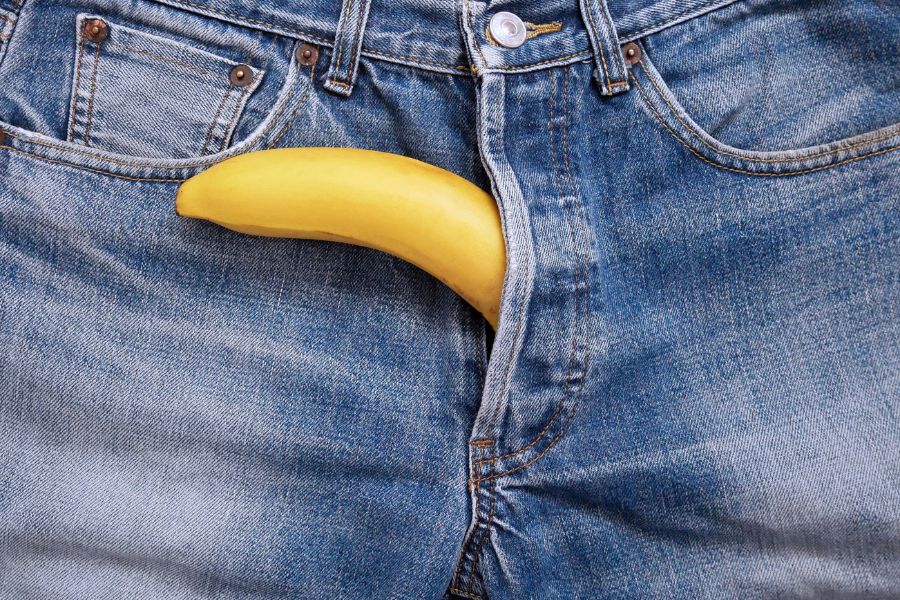
Tell me about the various studies that measure the size of the human penis.
Numerous surveys have been conducted to determine the average size of the human penis, both flaccid and erect. However, it’s important to note that the results of these surveys can vary greatly depending on various factors, such as the population studied, measurement methods, and the sources of funding for the research.
Some of the more well-known surveys include:
- The Kinsey Report: Conducted in the 1940s and 1950s, this study found that the average erect penis length was 6.21 inches.
- The British Journal of Urology International (BJUI): A study published in the BJUI in 2015 found that the average erect penis length was 5.16 inches, and the average flaccid length was 3.61 inches.
- The Erect Penile Length and Circumference Dimensions of 1,661 Sexually Active Men in the United States: A study published in the Journal of Sexual Medicine in 2015 found that the average erect penis length was 5.16 inches and the average erect circumference was 4.59 inches.
- Penile Length in the Flaccid and Erect States: Guidelines for Penile Augmentation” (British Journal of Urology International, 1998) – This study measured the penis size of 80 men and found that the average flaccid penis length was 3.67 inches (9.31 cm) and the average erect penis length was 5.16 inches (13.12 cm).
- Penile Size and Somatometric Parameters in Healthy Egyptian Males: This study measured the penis size of 2000 Egyptian men and found that the average erect penis length was 5.7 inches (14.5 cm).
It’s important to remember that these surveys only provide a general idea of the average penis size and that a wide range of sizes are considered normal. Penis size does not determine a man’s sexual satisfaction or pleasure, and individuals should not feel ashamed or embarrassed about their bodies.
What is a micro-penis?
A micro-penis is a term used to describe a penis that is 2.75 inches (7 cm) or shorter when erect. This condition is considered a form of micropenis, a rare medical condition affecting approximately 0.6% of men.
It is often caused by hormonal imbalances or genetic factors and may require medical treatment, such as hormone therapy or surgery.
However, it’s important to remember that having a small penis does not necessarily mean that a man has a medical condition or that it will impact their sexual satisfaction or function. Individuals with concerns about their penis size need to speak with a doctor or sexual health professional for a proper evaluation and personalized advice.
When erect, my penis is only 4 inches long. Will it be alright?
Penis size is a common concern for many men, but it’s essential to understand that a wide range of sizes is considered “normal.” In fact, the average erect penis length is 5.16 inches. So, having a 4-inch penis is within the normal range.
It’s also important to remember that size is not the only factor that affects sexual pleasure or satisfaction for either partner. Communication, intimacy, and other aspects of sexual experience play a much more significant role.
If you are concerned about your penis size, it’s important to talk to a doctor or sexual health professional who can provide you with more information and support. They can also rule out any underlying medical conditions affecting your penis size.
What is a macropenis? Is there a general range of size that qualifies as a macropenis?
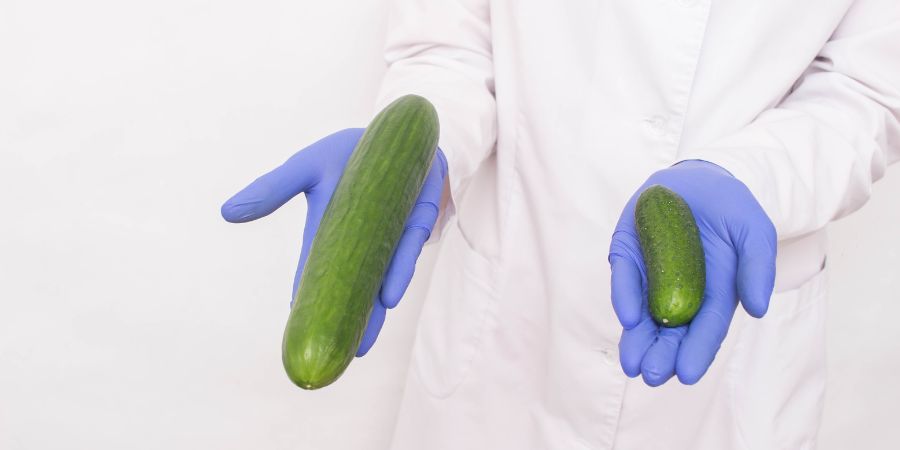
The term used to describe the opposite of a micro-penis is “macropenis.” A macropenis is an unusually large penis, although there is no widely accepted medical definition or cutoff for what constitutes a “large” penis. Macropenis can be caused by hormonal imbalances or genetic conditions and lead to difficulties with sexual function, hygiene, and clothing fit.
There is no widely accepted definition or cutoff for what constitutes a “macropenis,” as penis size can vary greatly between individuals and populations. However, in medical literature, a penis at least 7.5 inches (19 cm) in length when erect is sometimes considered unusually big and may be described as a “macropenis.”
It’s important to note that having a larger-than-average penis does not necessarily mean a man has a medical condition. That size alone does not determine a man’s sexual satisfaction or pleasure.
My penis is unusually large. What should I do?
If you have an extra large penis size, you may be experiencing discomfort or issues in your sexual life. Speaking with a doctor or healthcare provider for personalized advice and treatment is important.
They may recommend various options, including lifestyle changes, lubrication, suitable positions, or in some cases, surgery, to help manage any symptoms and improve your quality of life.
Additionally, it’s important to remember that having a large penis size is not a medical condition and does not necessarily indicate any underlying health problems.
It’s also important to remember that penis size is a sensitive topic, and it is common for men to feel self-conscious or anxious about their size. However, it is important to remember that every individual is unique, and there is a wide range of normal penis sizes.
There is no “right” or “wrong” size, and what is most important is that you feel comfortable and confident in your own body.
Can your penis get smaller as you get older?
It is not uncommon for the penis to change in size as a person ages, but this is typically due to various factors and not simply the result of aging itself.
Penis size can be influenced by hormonal changes, decreased blood flow, weight gain, and other factors that can occur with age. In some cases, an enlarged prostate gland or other medical conditions can also contribute to changes in penis size.
It’s important to remember that these changes can vary significantly among individuals and that there is no single “normal” size for the penis at any age. If you have concerns about changes in your penis size, it’s best to speak with a doctor or sexual health professional for a proper evaluation and personalized advice.
In terms of a human penis, what do “shower” and “grower” mean?
“Shower” and “grower” are terms used to describe two different patterns of penis size changes during an erection.
A “shower” refers to a penis that appears larger when flaccid but does not change significantly in size when erect. In other words, the flaccid size is relatively close to the erect size.
A “grower” refers to a penis that appears smaller when flaccid but increases greatly in size when erect. In other words, the flaccid size is significantly smaller than the erect size.
It’s important to keep in mind that these terms are not scientific or medically recognized and that penis size can vary greatly between individuals and populations.
Is there a study that reveals what percentage of men are growers and what percentage of men are showers?
No widely accepted survey or study accurately determines the percentage of men who are “growers” versus “showers.” These terms are informal and not scientifically recognized, and penis size can vary greatly between individuals and populations.
Several studies have been conducted to determine the average penis size, but these studies have not distinguished between “growers” and “showers.”
We only have one trustworthy study’s findings, demonstrating that 74% of men’s penises were “showers” and only 26% were “growers.”
The size and shape of the penis can be influenced by many factors, including genetics, hormones, and age, and can also change throughout a man’s life.
Is the penis slightly darker than the skin tone?
The color of the penis can vary depending on several factors, including skin tone, blood flow, and overall health. In some individuals, the penis may be a different shade than the surrounding skin, but this is a normal variation and not a cause for concern.
The skin of the penis is thinner and more sensitive than other areas of the body, which can make it more susceptible to changes in color. For example, increased blood flow to the penis during an erection can cause the penis to appear darker, while temperature changes can also affect the color of the penis.
If you have concerns about the color of your penis or any sudden changes, it’s best to speak with a doctor or sexual health professional for a proper evaluation and personalized advice.
What is an erection angle? Is there any data about it?
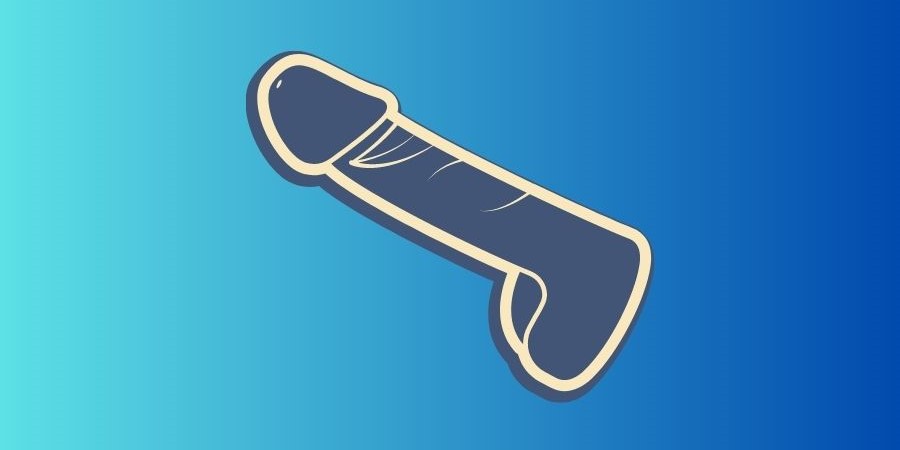
Erection angle refers to the angle at which the penis becomes erect during sexual arousal or stimulation. The average erection angle is not well-defined, as it can vary greatly between individuals and depend on several factors, including age, overall health, and any underlying medical conditions.
There is limited scientific data on erection angles, and much of the information is based on anecdotal reports or small-scale studies. However, it is generally considered that the average erection angle falls within a range of 30 to 85 degrees relative to the body.
The information below was gleaned from a study that counted 1,484 erections.
In the data below, the measurement would be 0 degrees if the penis was directed straight up and 90 degrees if it was pointing forward (horizontally):
- 0–30° – 4.9% of participants
- 30–60° – 29.6% of participants
- 60–85° – 30.9% of participants
- 85–95° – 9.9% of participants
- 95–120° – 19.8% of participants
- 120–180° – 4.9% of participants
It’s important to remember that there is a wide range of normal when it comes to penis anatomy and that the angle of an erection is just one aspect of overall penis health and function.
Is an erect penis always straight?
An erect penis is not always straight in shape. In fact, some degree of curvature is common and considered normal.
The angle and direction of the curvature can vary significantly between individuals and can be influenced by several factors, including age, overall health, and any underlying medical conditions.
There isn’t much scientific knowledge on penis curvature, and most of what is known are based on anecdotes or small-scale studies. However, up to 30% of men reportedly experience some degree of penile curvature when erect.
What is the determining factor of one’s penis size?
Penis size is primarily determined by genetics, although other factors such as hormones, age, and health can also play a role.
Research has found that the length and girth of a man’s penis are influenced by genes on the X chromosome, one of the two sex chromosomes.
Additionally, prenatal exposure to hormones can also affect penis size, with higher levels of testosterone leading to a longer penis.
Finally, age and health can also impact penis size, with some studies showing that penis size can decrease as a man ages or if he experiences health problems such as obesity or cardiovascular disease.
However, it is important to note that there is a wide range of normal penis sizes, and what may be considered small for one man may be average or even large for another.
Questions About Balls
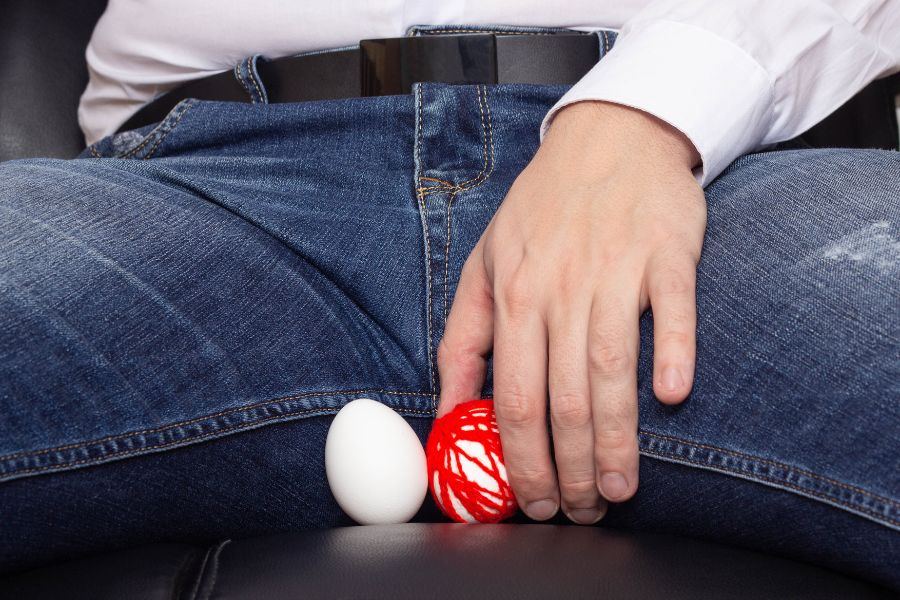
What determines one’s testicle size?
Testicle size is primarily determined by genetics and hormones. Testicles develop and grow during puberty in response to hormonal signals from the pituitary gland and the hypothalamus. Testicle size is influenced by several factors, including the amount of testosterone produced by the testicles, age, and overall health.
Testicles can also vary in size due to temperature regulation. The scrotum, which holds the testicles, is designed to keep the testicles at the optimal temperature for sperm production. As a result, the scrotum can change size in response to changes in temperature.
My scrotum is too big from my teenage years and slightly bigger than a tennis ball. But there is no pain or other discomfort. Is it normal?
A scrotum larger than normal can be a sign of a medical condition, but it can also be normal for some men. A scrotum that is larger than a tennis ball would be considered larger than average, but it is not necessarily a cause for concern.
However, if you are experiencing any pain or discomfort in your scrotum or if you notice any lumps or changes in the size or shape of your testicles, it is important to speak with a doctor. They can perform an examination and run any necessary tests to determine the cause of your symptoms and provide appropriate treatment.
My scrotum hangs too low even in cold temperatures. Is it normal?
A low-hanging scrotum is a common condition and is considered normal for some men. It is also referred to as a “dropped” or “empty” scrotum.
In many cases, a low-hanging scrotum result from aging or genetics and does not cause any medical problems.
However, in some cases, a low-hanging scrotum can signify a medical condition, such as an inguinal hernia.
If you are experiencing any pain or discomfort in your scrotum or if you notice any changes in the size or shape of your testicles, it is important to speak with a doctor.
As I age, what might I anticipate in my scrotum?
As you get older, you may experience changes in the appearance and size of your scrotum. Some common changes include:
- Sagging or drooping: As you age, the skin and muscles supporting the scrotum may weaken, causing it to sag or droop.
- Changes in skin texture: The skin of the scrotum may become drier, thinner, and less elastic, which can lead to wrinkles, age spots, and other changes in texture.
- Variations in size: The size of your scrotum may fluctuate, especially in response to changes in temperature, sexual arousal, or hormone levels.
Are all adult scrotums hairy?
Not all adult scrotums are hairy. Some men may have a small amount of hair on their scrotum, while others may have a lot, and some may have none at all. The amount of hair on the scrotum can be influenced by a variety of factors, including genetics, hormone levels, and personal grooming habits. Hair growth on the scrotum is a normal variation, and there is no “right” or “wrong” amount of hair.
Should both testicles in the scrotum have the same size and shape?
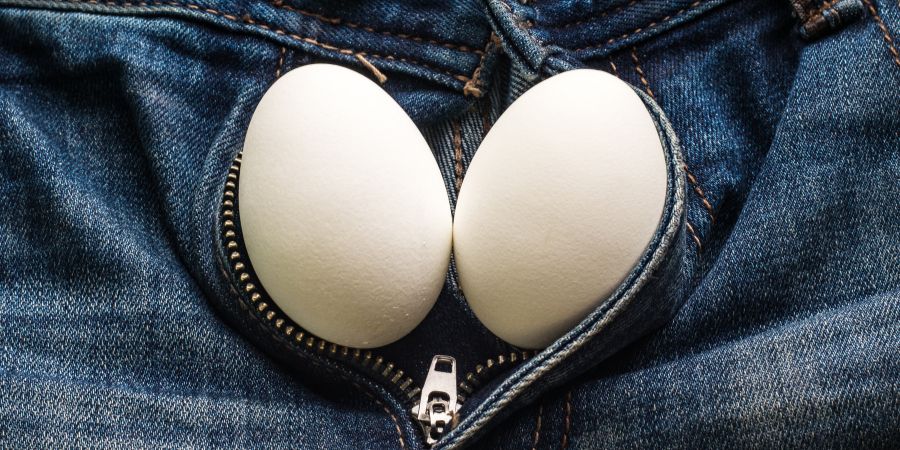
No, it is normal for both testicles to be different in size and shape within the scrotum. In fact, differences in testicle size and shape are common and usually not a cause for concern.
However, sudden or significant changes in the size or shape of one or both testicles can be a sign of a medical problem, and it is important to seek the advice of a healthcare professional if you experience such changes.
Additionally, pain or swelling in the testicles should also be evaluated by a doctor. It is always best to be proactive about your health and seek medical attention if you have any concerns.
Why does my scrotum look darker than the rest of my body?
The scrotum is naturally darker than the surrounding skin due to an increased concentration of melanin, the pigment that provides color to the skin.
This difference in skin color is common and is due to the anatomy and function of the scrotum. The scrotum is designed to protect and regulate the temperature of the testicles, which are vital for sperm production. The scrotum’s darker color helps absorb and retain heat, which is necessary for optimal sperm production.
Does a large penis mean large balls, also?
The size of a man’s scrotum is not necessarily directly related to the size of his penis. Factors such as age, overall health, and genetics can all play a role in determining the size of a man’s scrotum. Additionally, there is a wide range of normal variations in scrotum size, so even among men with larger-than-average penises, the size of their scrotums can still vary.
Final Words
In conclusion, there are many common questions and misconceptions about male anatomy. From penis size and erections to the scrotum and testicles, it’s important to understand the truth behind these topics and address them in an informed and respectful manner.
The male body is a complex and fascinating system, and understanding it can help men better care for their health and well-being.
It’s also important to remember that everyone is unique, and there is a wide range of normal variations regarding the male anatomy. By breaking down the myths and misconceptions, we can promote a better understanding of the male body and its functions.

